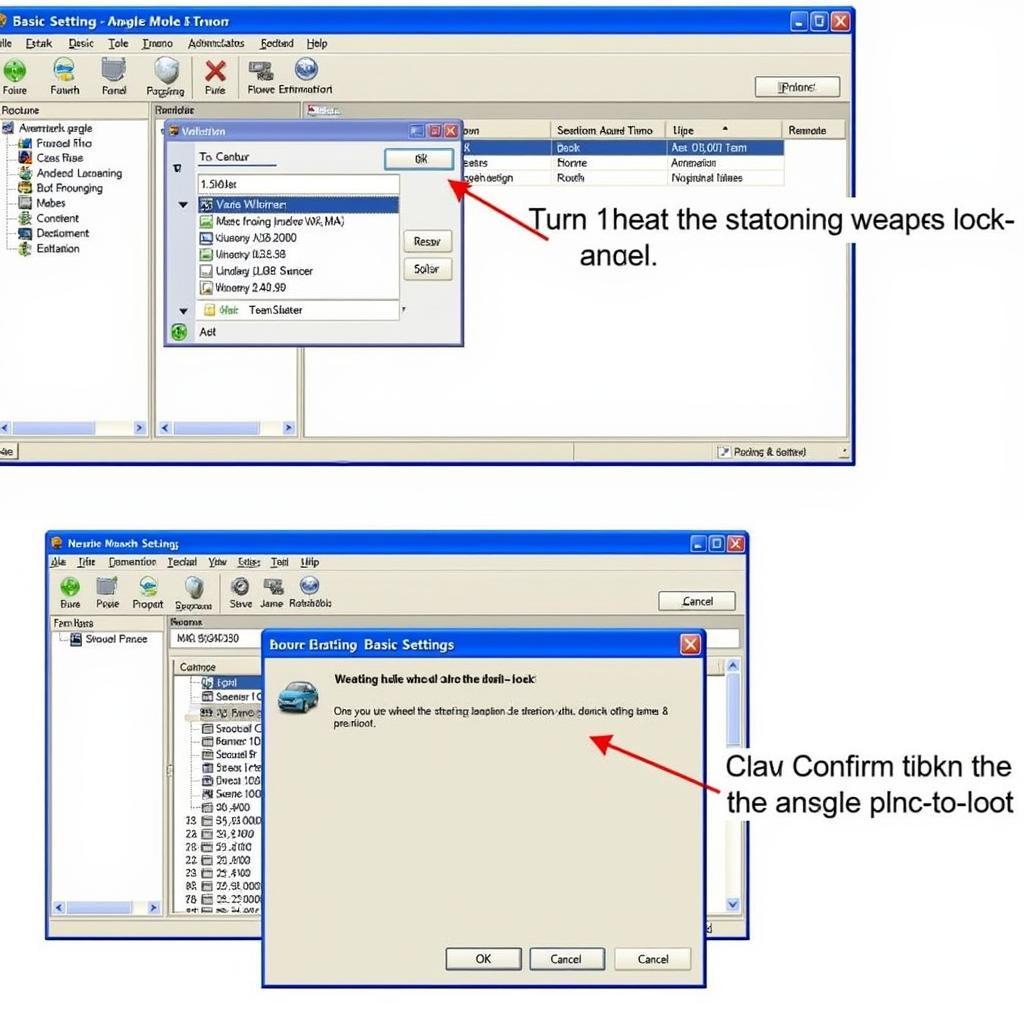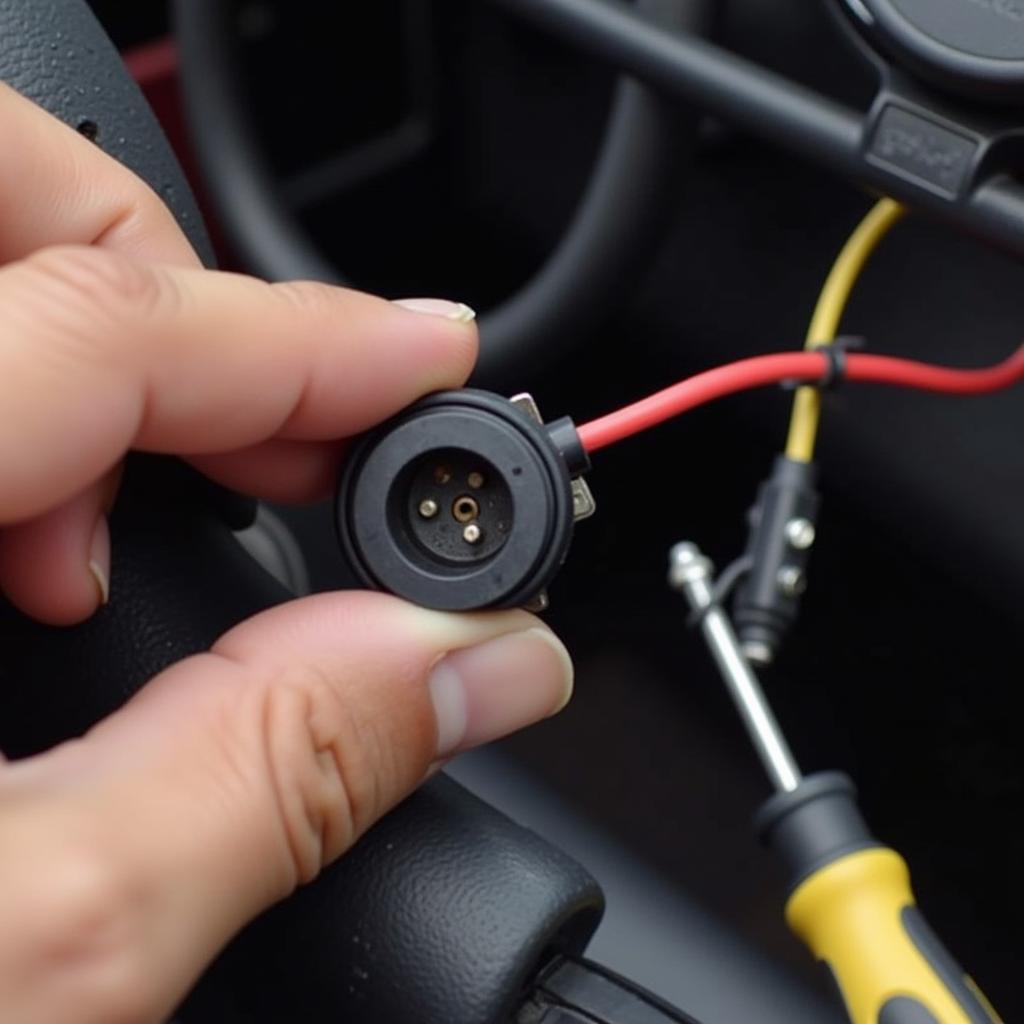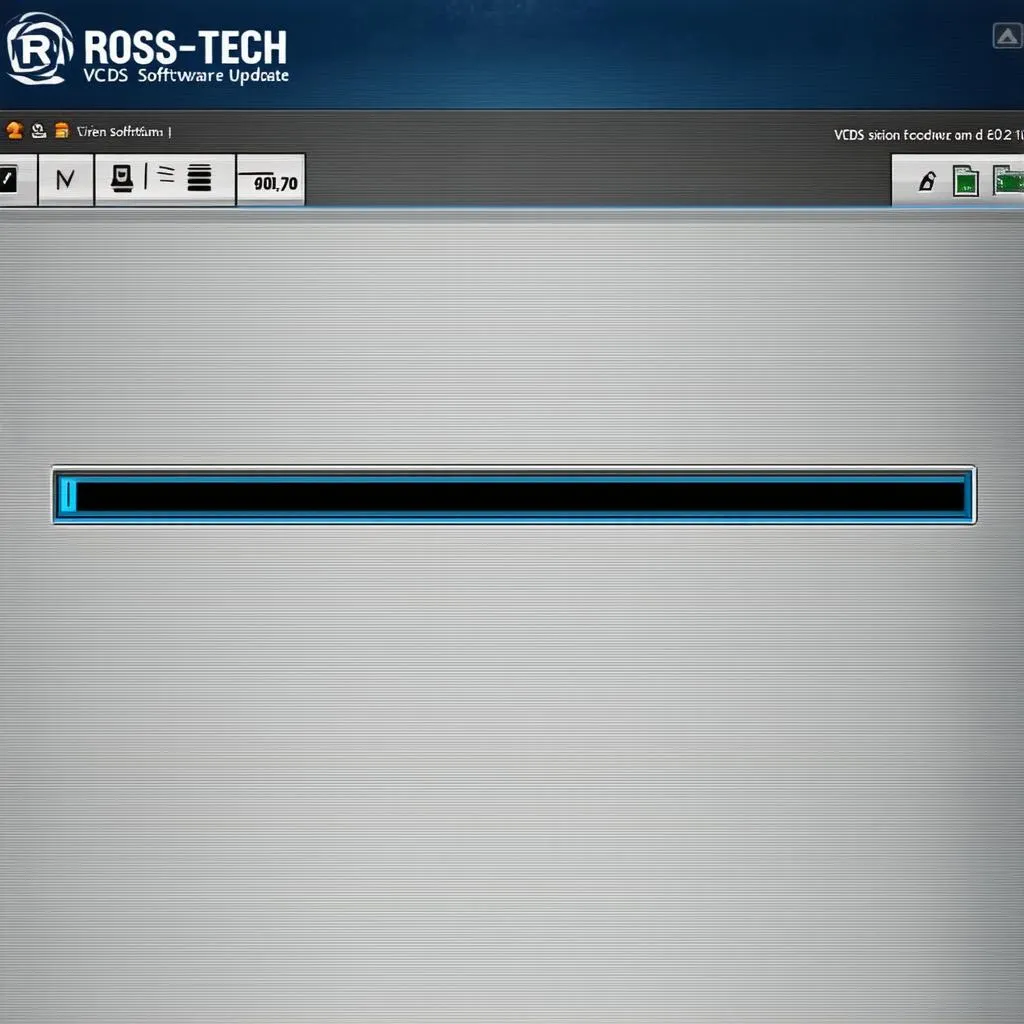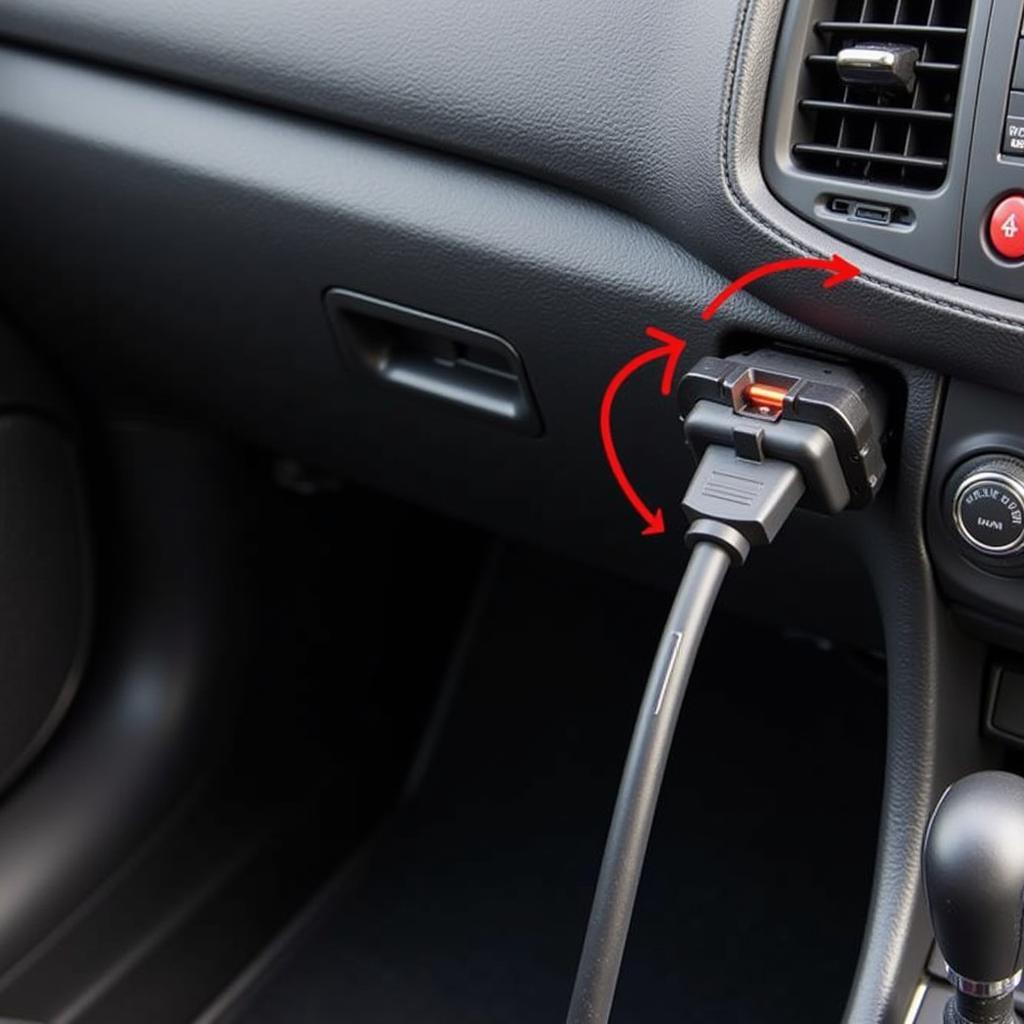Using VCDS (Vag-Com Diagnostic System) to diagnose and fix a faulty steering angle sensor can save you a trip to the mechanic and some serious cash. This guide will walk you through the process, from identifying the problem to clearing the fault codes. We’ll cover common issues, step-by-step instructions, and helpful tips to get your steering wheel back on track.
Many modern vehicles rely on the steering angle sensor (G85) for various systems, including Electronic Stability Program (ESP), Adaptive Cruise Control (ACC), and lane-keeping assist. When this sensor malfunctions, it can trigger a range of issues, from a lit-up ESP warning light to more serious drivability problems. Learning how to use VCDS to fix steering angle sensor problems can be incredibly empowering. Here’s how you can use this powerful diagnostic tool to pinpoint and rectify these issues.
First, connect your vcds car scanner to your vehicle’s OBD-II port and launch the VCDS software. Select the correct control module for your vehicle, typically labeled “Steering Wheel Electronics” or similar. Once inside the module, navigate to the “Fault Codes” section. This will display any stored fault codes related to the steering angle sensor. A common code you might encounter is the 00716 vcds code.
Understanding Steering Angle Sensor Fault Codes
Before attempting any fixes, understanding the fault codes is crucial. Each code corresponds to a specific issue, allowing for targeted troubleshooting. For example, a code related to an implausible signal might suggest a wiring problem, while a code indicating a sensor malfunction points to a faulty sensor. Make a note of all the codes present before proceeding.
Performing Basic Setting with VCDS
Once you’ve identified the fault codes, the next step is often to perform a Basic Setting or calibration of the steering angle sensor. This process realigns the sensor with the steering wheel’s position, effectively resetting it. Within the selected control module, locate the “Basic Settings” function. Follow the on-screen prompts provided by VCDS, which will typically involve turning the steering wheel lock-to-lock.
 VCDS Steering Angle Sensor Basic Settings Procedure
VCDS Steering Angle Sensor Basic Settings Procedure
Clearing Fault Codes with VCDS
After performing the Basic Setting, return to the “Fault Codes” section and clear the existing codes. Then, test drive your vehicle to see if the issue has been resolved. If the fault codes return, further investigation is needed.
Checking Wiring and Connections
Sometimes, a faulty steering angle sensor isn’t the problem at all. Damaged wiring or loose connections can cause communication issues between the sensor and the control module. Carefully inspect the wiring harness leading to the steering angle sensor for any signs of damage, such as cuts, fraying, or corrosion. Also, ensure that the connector is securely fastened.
Replacing the Steering Angle Sensor
If the above steps haven’t resolved the issue, a faulty sensor is the likely culprit. In this case, replacement is usually necessary. While this can be done DIY, it’s often best left to a professional, as improper installation can lead to further problems. Remember to perform another Basic Setting after replacing the sensor.
 Replacing Steering Angle Sensor
Replacing Steering Angle Sensor
Common Issues and Solutions
Intermittent Problems
Intermittent issues can be tricky to diagnose. They might be caused by loose connections, a failing sensor, or even environmental factors. If you’re experiencing intermittent problems, closely monitor the conditions under which they occur. This can provide valuable clues for troubleshooting.
Incorrect Coding
Sometimes, incorrect coding within the control module can cause issues with the steering angle sensor. Ensure that the coding is correct for your specific vehicle model and options. You might find resources like the ross tech vcds forum helpful for coding issues.
Other Related Faults
Issues with other systems, such as the ABS or ESP, can sometimes impact the steering angle sensor. Address any other related faults before focusing solely on the steering angle sensor. For example, vw vcds coding afs lighting fault could be indirectly related.
“A thorough understanding of VCDS and its capabilities is essential for effective diagnostics,” says John Miller, a certified automotive technician with over 20 years of experience. “It allows you to pinpoint the root cause of the problem, saving both time and money.”
Conclusion
Using VCDS to diagnose and fix steering angle sensor problems empowers car owners and technicians to take control of their vehicle’s maintenance. By understanding the fault codes, performing basic settings, and systematically checking the system, you can often resolve these issues without expensive trips to the mechanic. Remember to always consult your vehicle’s repair manual and exercise caution when working with electronic systems. Properly using VCDS to fix steering angle sensor issues can ensure your car’s steering system operates safely and reliably. Explore options like vcds lite full for comprehensive features.
FAQ
- What is a steering angle sensor? It’s a sensor that measures the position of your steering wheel.
- Why is my steering angle sensor important? It’s crucial for safety systems like ESP and ACC.
- Can I replace a steering angle sensor myself? Yes, but it’s often best left to professionals.
- What is VCDS? It’s a diagnostic tool for Volkswagen, Audi, Seat, and Skoda vehicles.
- Where can I find more information about VCDS? Online forums and the Ross-Tech website are good resources.
- How much does a steering angle sensor cost? Prices vary depending on the make and model of your car.
- What are some common steering angle sensor fault codes? 00716 is a common one.
Common Scenarios
- Scenario 1: ESP light is on, and the steering wheel feels heavy. This might indicate a faulty steering angle sensor.
- Scenario 2: The car drifts to one side while driving. This could be due to a misaligned steering angle sensor.
- Scenario 3: The cruise control doesn’t work properly. This could also be related to a faulty or misaligned steering angle sensor.
Further Reading
For more information on related topics, check out other articles on our website about VCDS, fault codes, and various car maintenance procedures.
When you need assistance, don’t hesitate to contact us via Whatsapp: +1 (641) 206-8880, Email: CARDIAGTECH[email protected] Or visit us at: 276 Reock St, City of Orange, NJ 07050, United States. We have a 24/7 customer support team ready to help.


